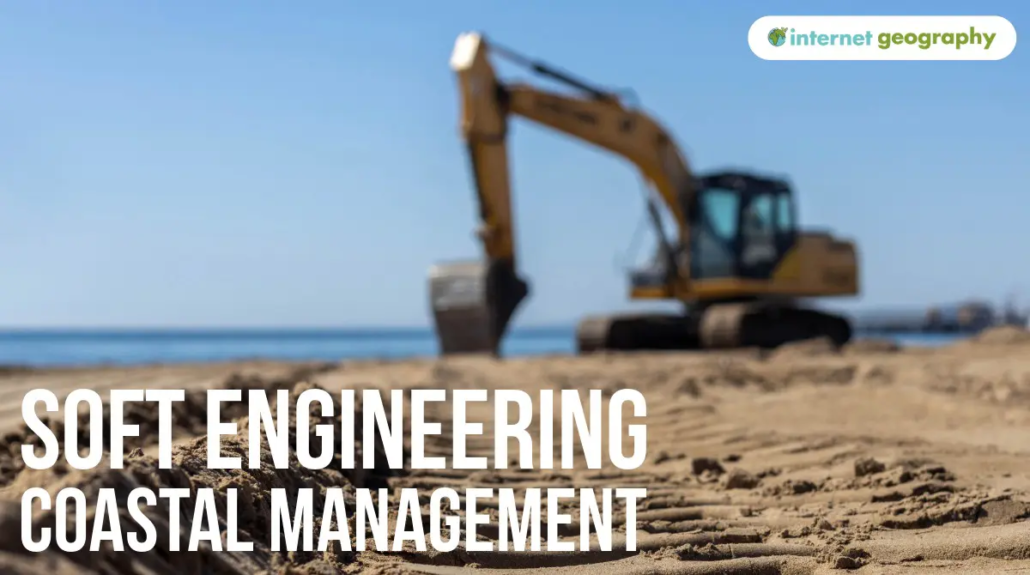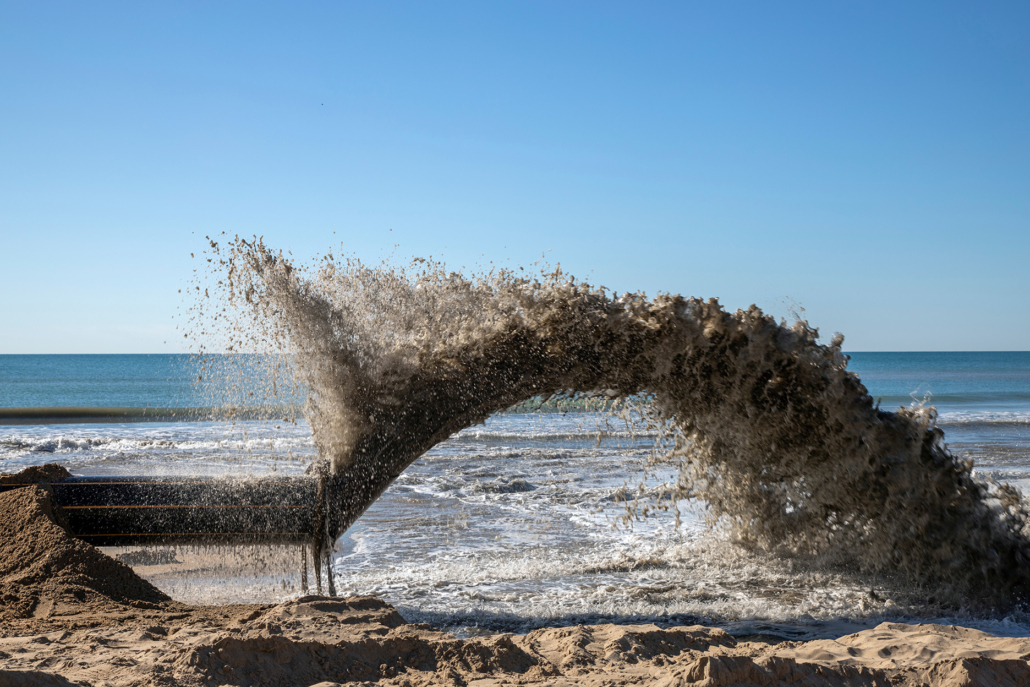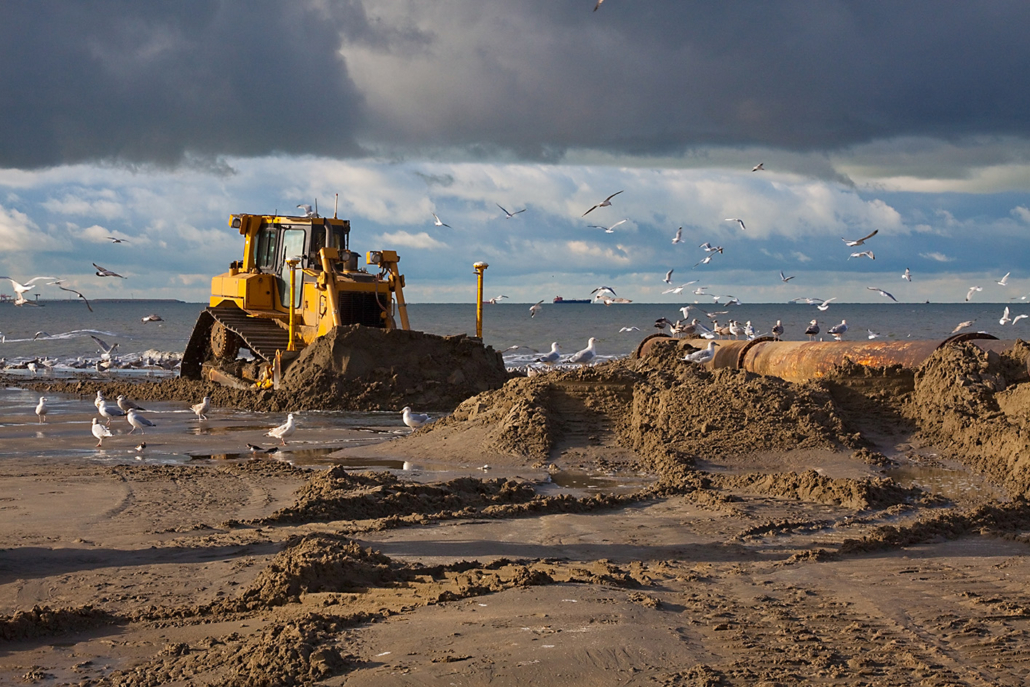Soft Engineering
Soft engineering does not involve building artificial structures but takes a more sustainable and natural approach to managing the coast.
Compared to hard engineering, soft engineering approaches are less expensive and are more long-term, attractive and sustainable as they work with natural processes. Below, we explore some of the soft engineering techniques available in managing coastlines.
Beach nourishment
Beaches are made higher and wider by importing sand and shingle to an area affected by longshore drift to increase its height and width to protect from erosion or flooding by absorbing wave energy.
Advantages
The approach is cheap and retains the natural appearance of the beach. Beaches are a natural defence against erosion. Additionally, the beach is a valuable amenity for tourism, bringing economic benefits to the area.
Disadvantages
Offshore dredging of sand and shingle increases erosion in other areas and affects the marine ecosystem. Large storms will require further beach replenishment, increasing costs.
Additionally, people may be prevented from using the beach for several weeks during the year during maintenance.
Approximate Cost
£20 /cu.m
Managed retreat (coastal realignment)
This is when areas of the coast are allowed to erode. This is usually in areas where the land is of low value.
Advantages
Managed retreat retains the natural balance of the coastal system. Eroded material encourages the development of beaches and salt marshes.
Disadvantages
People lose their livelihood, e.g. farmers. These people will need to be compensated.
Approximate Cost
It depends on the compensation that needs to be paid to people affected by erosion.
Take a look at our coastal realignment case study on Donna Nook, Lincolnshire.
Dune Regeneration
Dune regeneration involves taking action to build up dunes and increase vegetation. This helps to strengthen the dunes and prevent coastal retreat. New sand dunes can be created to protect from coastal flooding. Often, marram grass is planted to hold the dunes together. Wooden boardwalks can be built to encourage people not to walk on the dunes.
Advantages
Dune regeneration provides a barrier between land and sea, absorbs wave energy, and provides cheap stabilisation. It also maintains a natural-looking coastline.
Biodiversity can increase due to dune regeneration by providing a greater range of natural habitats for plants, animals and birds.
Disadvantages
During dune regeneration, the land must be carefully managed so that any new vegetation planted is appropriately protected from trampling by humans. This could involve temporarily fencing off the dunes or providing wooden walkways. Storm waves can also damage dunes.
Beach Reprofiling
Beach reprofiling involves redistributing sediment from the lower part of the beach to the upper part of the beach.
Advantages
Cheap and simple, and reduces the energy of the waves.
Disadvantages
It only works when the wave energy is low and needs to be repeated continuously. The beach also needs to be closed during reprofiling, impacting local people, tourists and businesses.




